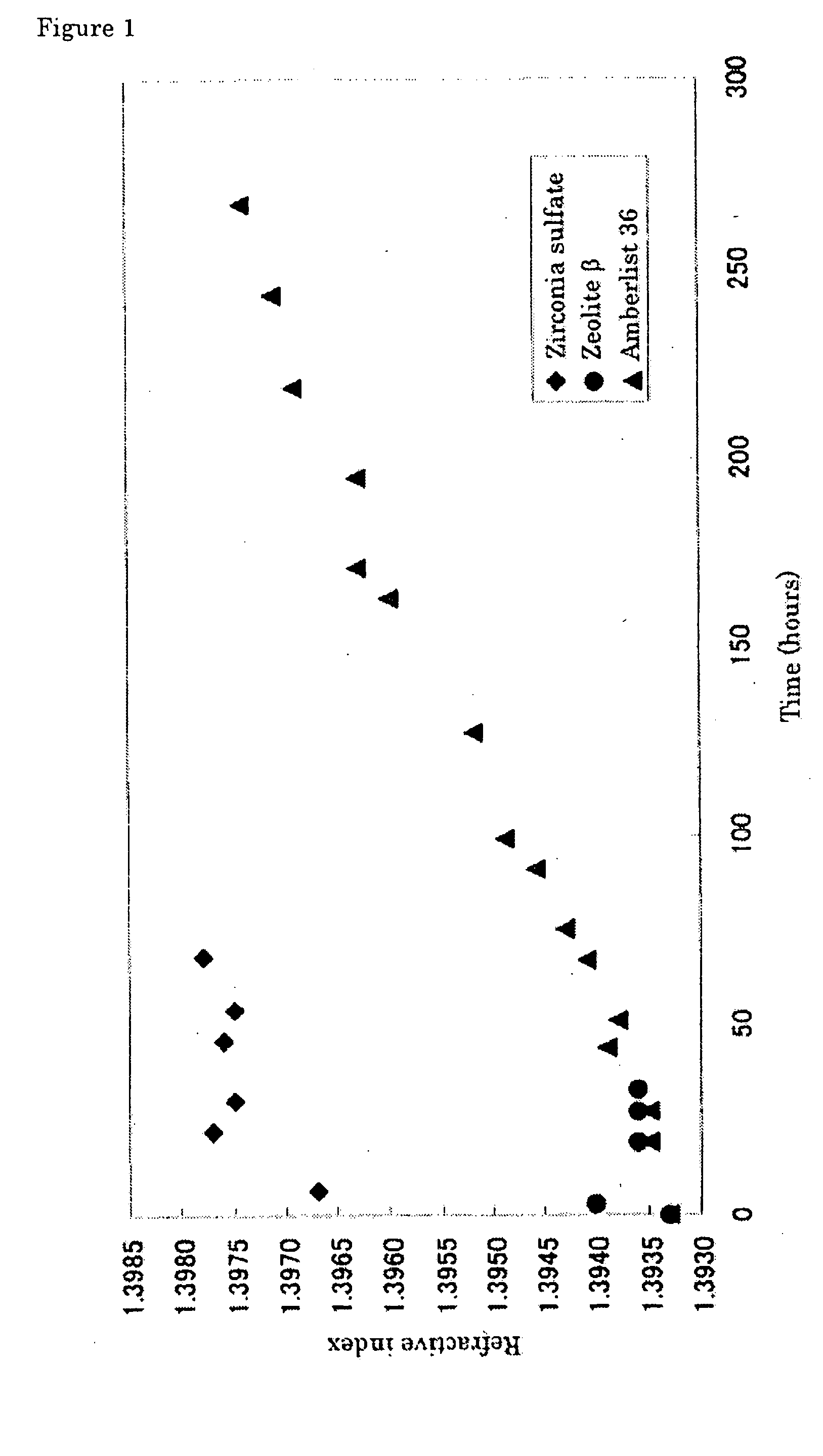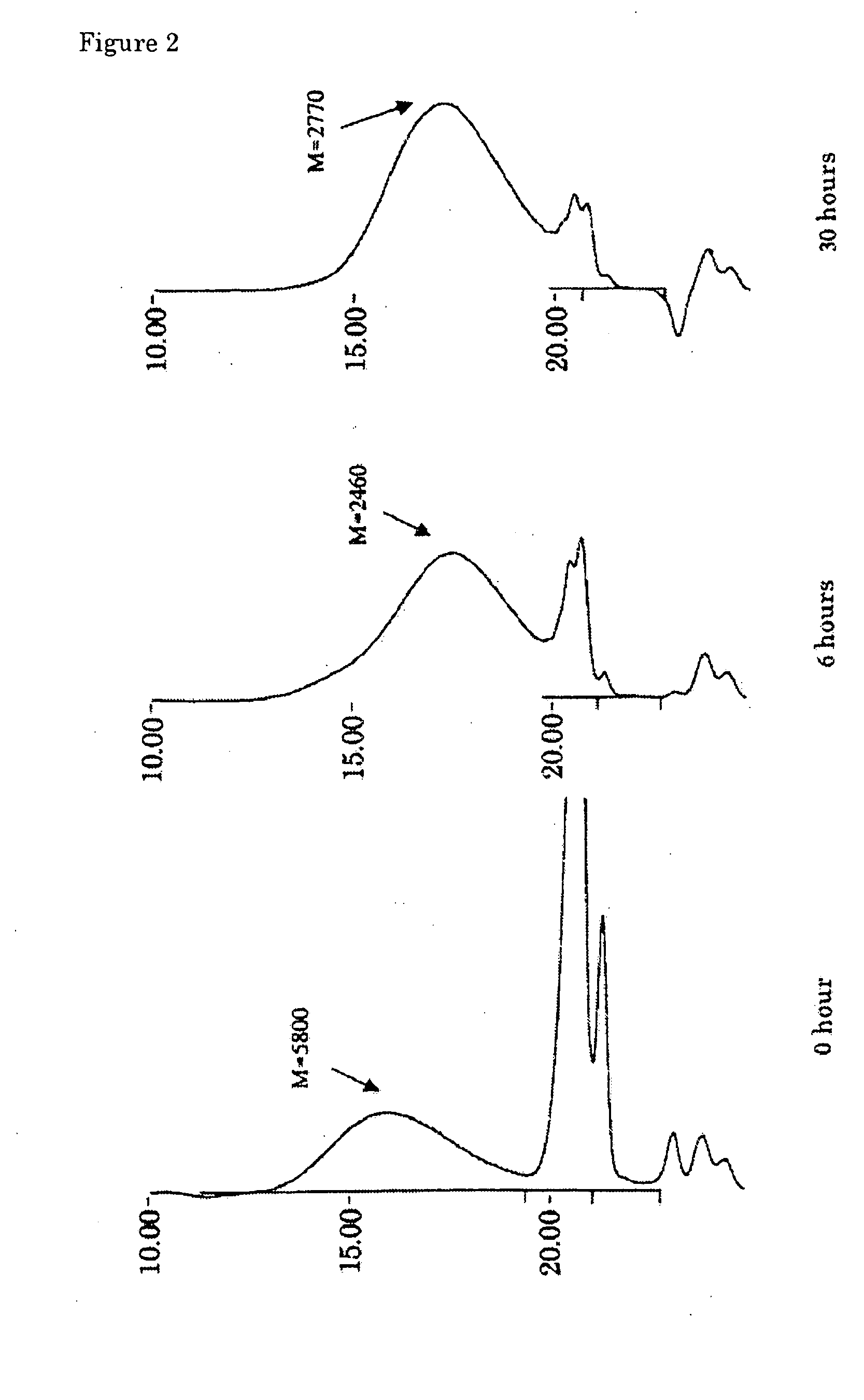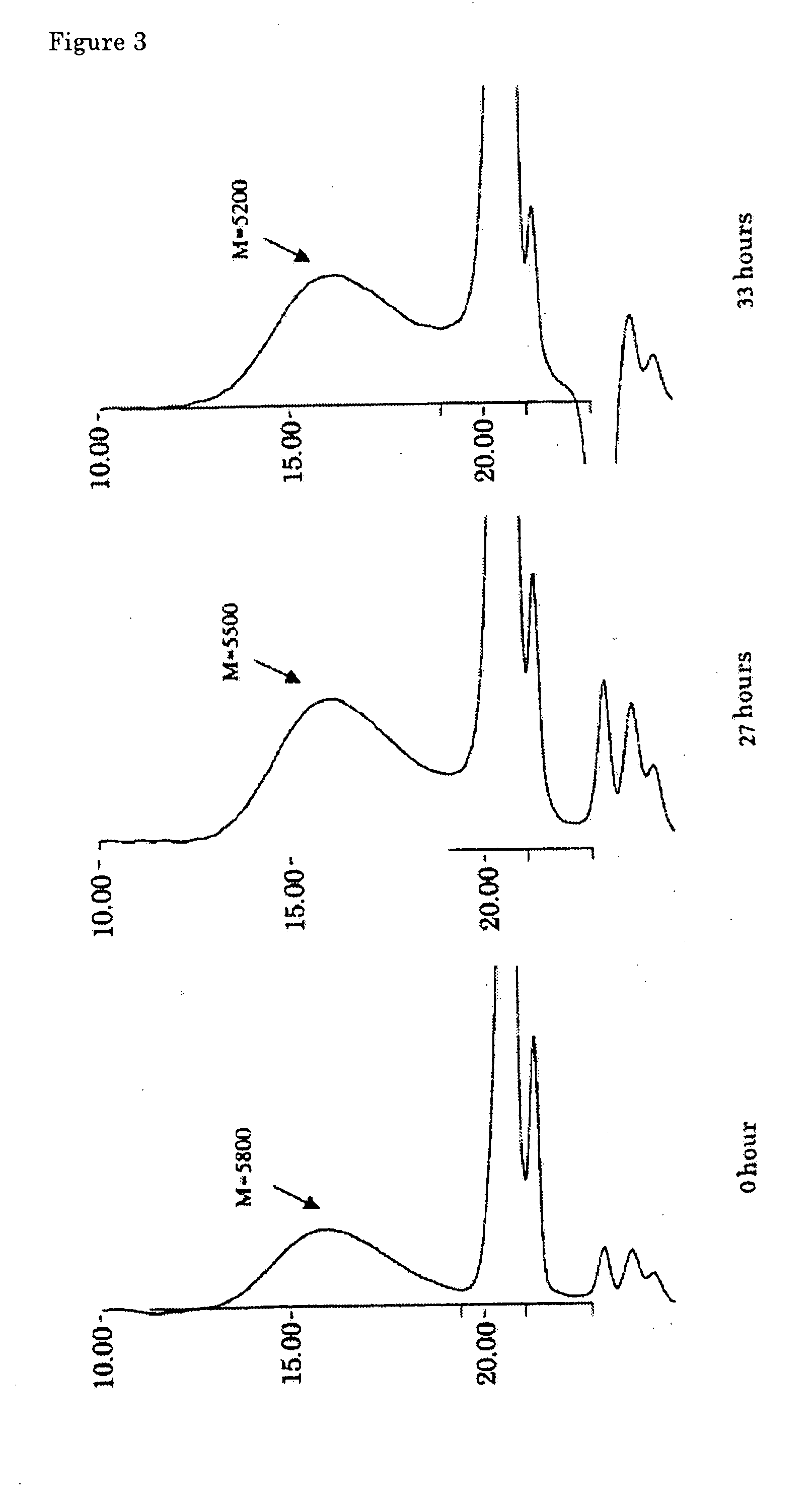Process for producing polyorganosiloxane with solid-acid zirconium oxide catalyst
a zirconium oxide and catalyst technology, applied in the direction of organic chemistry, chemistry apparatus and processes, group 4/14 element organic compounds, etc., can solve the problems of difficult recycling of recovered neutralization products, high cost, and high cost, and achieve high yield and productivity
- Summary
- Abstract
- Description
- Claims
- Application Information
AI Technical Summary
Benefits of technology
Problems solved by technology
Method used
Image
Examples
example 1
[0076] A flow reactor system equipped with a pressure gauge was assembled by connecting a pump, reactor tower (inner diameter: 15 mm), back-pressure valve and Erlenmeyer flask (500 ml) equipped with a magnetic stirrer, in this order. The reactor tower was charged with 20 mL of zirconia sulfate (SZA-60, Japan Energy) as a solid, acidic zirconium oxide catalyst, and sealed with glass wool at both ends. The zirconia sulfate was slightly crushed in a mortar to have a uniform size of 10 to 20 meshes, and fired at 350° C. in an oven for 2 hours just before it was charged into the reactor.
[0077] The Erlenmeyer flask was charged with 290 mL of a mixture of 7.87% by weight of hexamethyldisiloxane (Me3SiOSiMe3), 42.86% by weight of methyl hydrogen polysiloxane (Me3Si[OSi(H)(Me)]37OSiMe3, L-31, Nippon Unicar) and 49.27% by weight of octamethylcyclotetrasiloxane (SiMe2O)4, Y-7175, Nippon Unicar) as the starting mixture well-mixed beforehand to be uniform. The mixture was circulated at 67 g / hou...
PUM
| Property | Measurement | Unit |
|---|---|---|
| Temperature | aaaaa | aaaaa |
| Percent by mass | aaaaa | aaaaa |
| Residence time | aaaaa | aaaaa |
Abstract
Description
Claims
Application Information
 Login to View More
Login to View More - R&D
- Intellectual Property
- Life Sciences
- Materials
- Tech Scout
- Unparalleled Data Quality
- Higher Quality Content
- 60% Fewer Hallucinations
Browse by: Latest US Patents, China's latest patents, Technical Efficacy Thesaurus, Application Domain, Technology Topic, Popular Technical Reports.
© 2025 PatSnap. All rights reserved.Legal|Privacy policy|Modern Slavery Act Transparency Statement|Sitemap|About US| Contact US: help@patsnap.com



